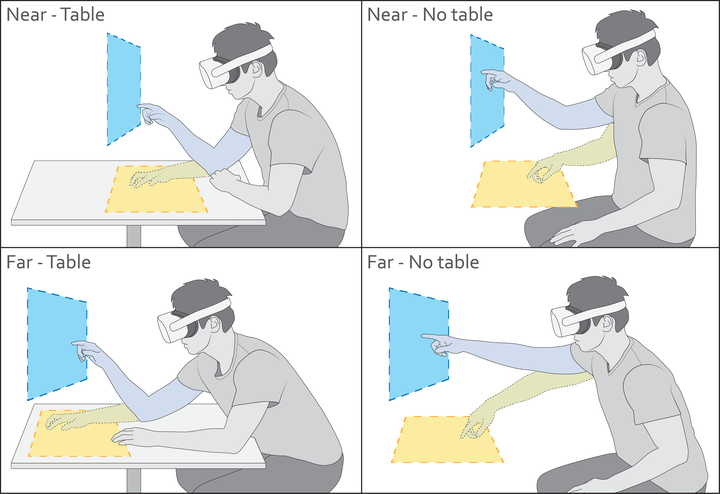ComforTable User Interfaces: Surfaces Reduce Input Error, Time, and Exertion for Tabletop and Mid-air User Interfaces

Abstract
Real-world work-spaces typically revolve around tables, which enable knowledge workers to comfortably perform tasks over an extended period of time during productivity tasks. Tables afford more ergonomic postures and provide opportunities for rest, which raises the question of whether they may also benefit prolonged interaction in Virtual Reality (VR). In this paper, we investigate the effects of tabletop surface presence in situated VR settings on task performance, behavior, and subjective experience. In an empirical study, 24 participants performed two tasks (selection, docking) on virtual interfaces placed at two distances and two orientations. Our results show that a physical tabletop inside VR improves comfort, agency, and task performance while decreasing physical exertion and strain of the neck, shoulder, elbow, and wrist, assessed through objective metrics and subjective reporting. Notably, we found that these benefits apply when the UI is placed on and aligned with the table itself as well as when it is positioned vertically in mid-air above it. Our experiment therefore provides empirical evidence for integrating physical table surfaces into VR scenarios to enable and support prolonged interaction. We conclude by discussing the effective usage of surfaces in situated VR experiences and provide initial guidelines.